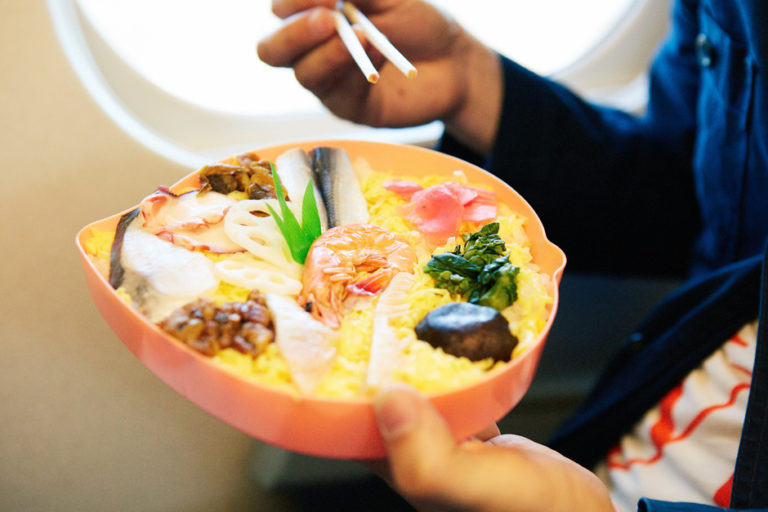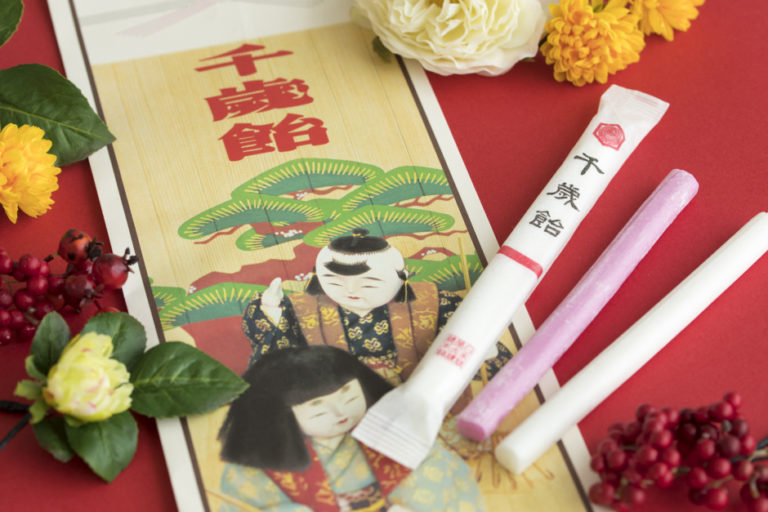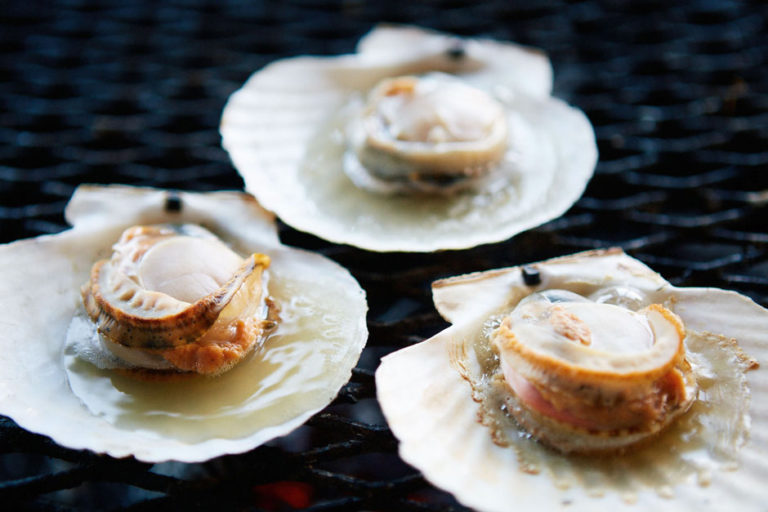A Seasonal Delight. Muscat Grape Wagashi Loved for Over 40 Years
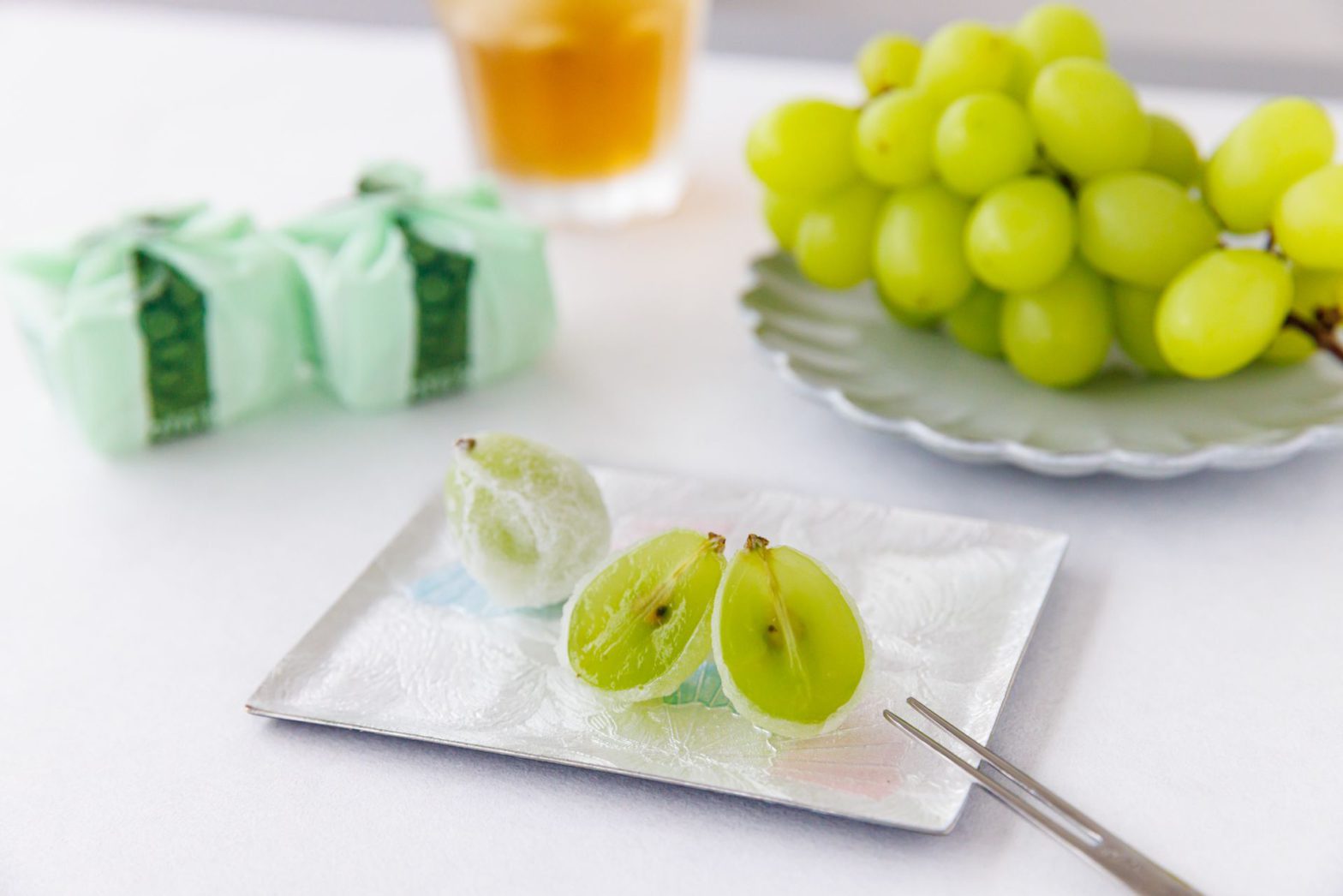
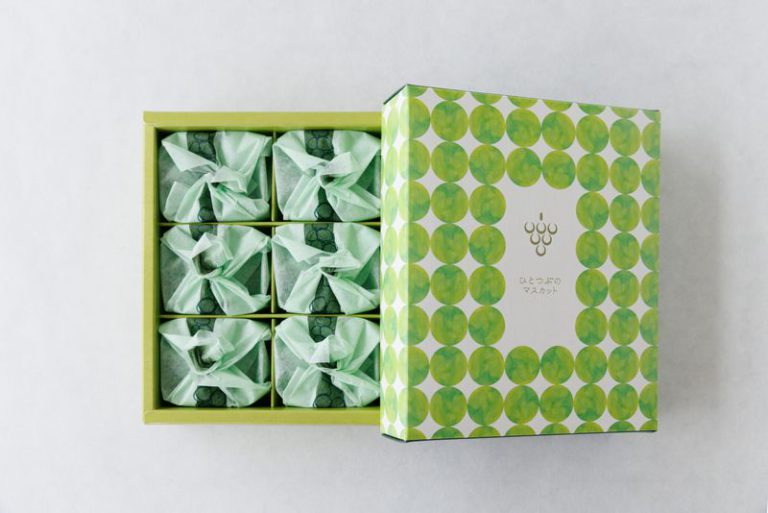
Here are some things that make Hitotsubu no Muscat a must-try.
Created in 1979 and originally a souvenir of a local summer festival in Mihara
The founder initially created the Hitotsubu no Muscat confection as a souvenir for the Yassa Matsuri, which takes place every August in Mihara, Hiroshima Prefecture. It is now a nationally known confectionery.
Made with Muscat of Alexandria picked in the morning by contracted farmers
Hitotsubu no Muscat is made with richly aromatic Muscat of Alexandria. The grapes are a rare variety, with production decreasing yearly, but the store works with contract farmers in Okayama Prefecture to secure their sufficient supply.
Each carefully wrapped by hand
The production process has remained unchanged for over 40 years, and is almost entirely done by hand, from picking the fruit from the clusters to wrapping it in gyuhi.
A modern treat created by the founder
Founded in Mihara, Hiroshima Prefecture, Kyorakudo’s main store is a traditional Japanese confectioner beloved by local residents. The store has 15 outlets nationwide and is popular for its Hitotsubu no Muscat and other wagashi featuring delicious, seasonal ingredients.
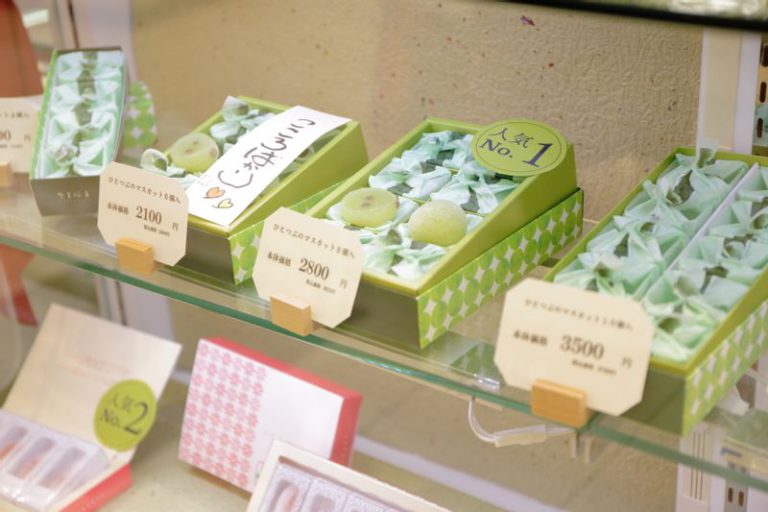
The founder of Kyorakudo, the grandfather of representative Toshihiro Shibakiri, created the signature product Hitotsubu no Muscat, which led to the store’s nationwide expansion. It was launched in 1979 as a souvenir of the local summer festival Yassa Matsuri. How did the founder devise such a modern wagashi 40 years ago?
Shibakiri explains, “Yamanashi Prefecture has a regional wagashi called Tsuki no Shizuku, made of Koshu grapes coated in sugar. When my grandfather tasted this as a young man, he thought, delicious! So, he tried to make something similar, but it didn’t work out. Then, he worked for a wagashi wholesaler in Okayama Prefecture, where he learned to wrap small items in thin layers of gyuhi. He came up with the idea of wrapping Okayama’s muscats in gyuhi, giving birth to this wagashi.”
When Shibakiri took over the family business, he changed the name to Hitotsubu no Muscat. To promote the product outside the prefecture, he kept selling it at events in department stores nationwide.
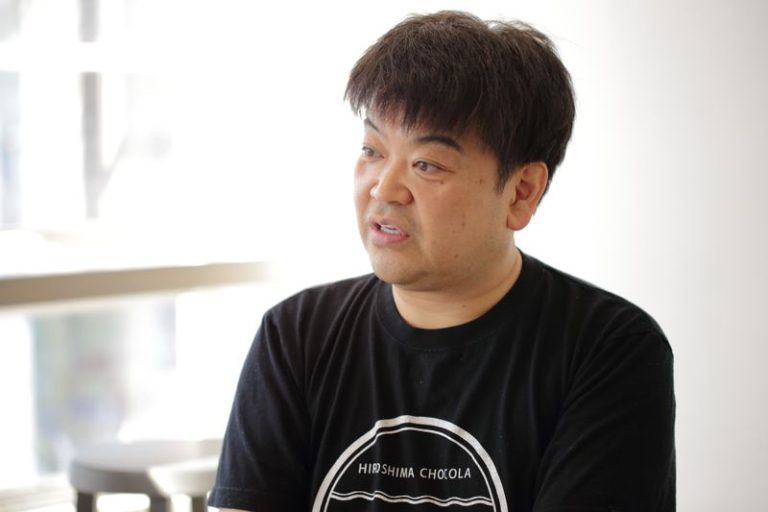
Looking back on his trajectory to date, Shibakiri says, “I really wanted to open a permanent store, but no one took me seriously at first, so I continued to run events for about 10 years. The customers really liked it, and eventually, I achieved my goal of opening a store. I hope my grandfather is pleased in heaven.”
The berries of the rare Muscat of Alexandria are hand-wrapped one by one
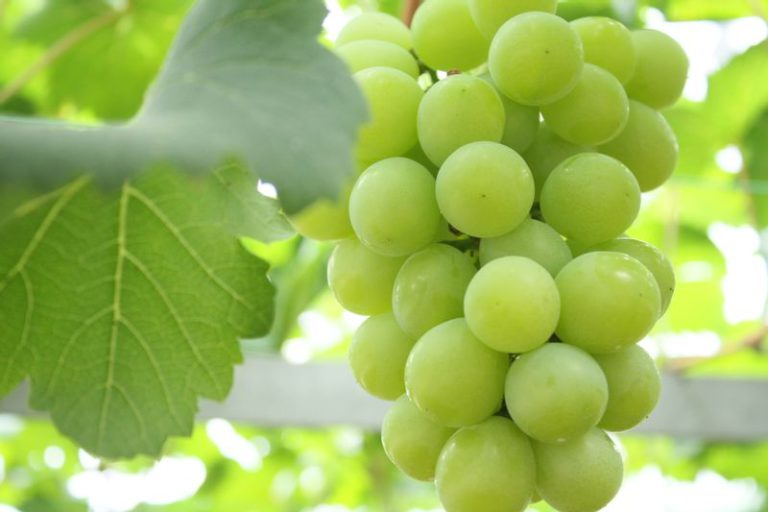
Hitotsubu no Muscat uses Muscat of Alexandria grapes. Out of all the different varieties, it has the most intense aroma, resulting in a particularly tasty end product. It is mostly produced in Japan’s Okayama Prefecture, but the number of producers is dwindling. Nevertheless, Shibakiri’s loyalty to the Muscat of Alexandria persists.
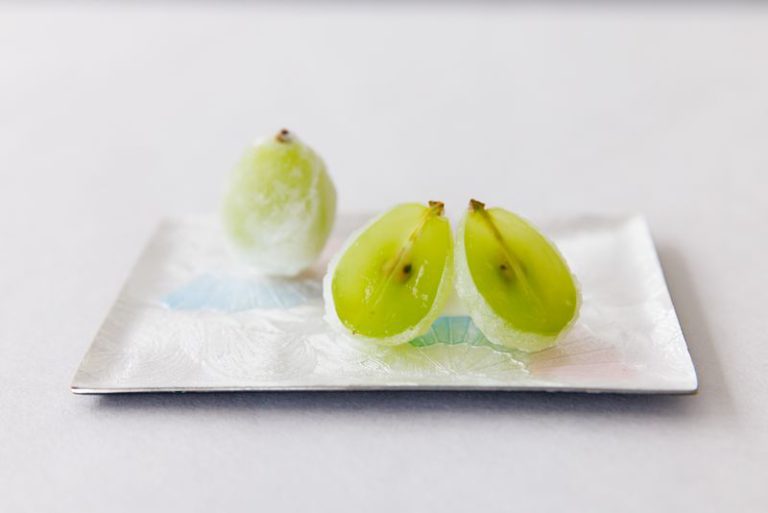
Shibakiri explains, “Despite the increasing difficulty in obtaining the Muscat of Alexandria variety each year, I have contracts with about 40 farmers to supply me with freshly picked grapes from Okayama Prefecture. The muscat, with its low sugar content and tartness, pairs well with the sweet gyuhi. Seedless is easier to eat, but the aroma is weaker without seeds, so I ask the farmers to adjust the cultivation to reduce the number of seeds.”
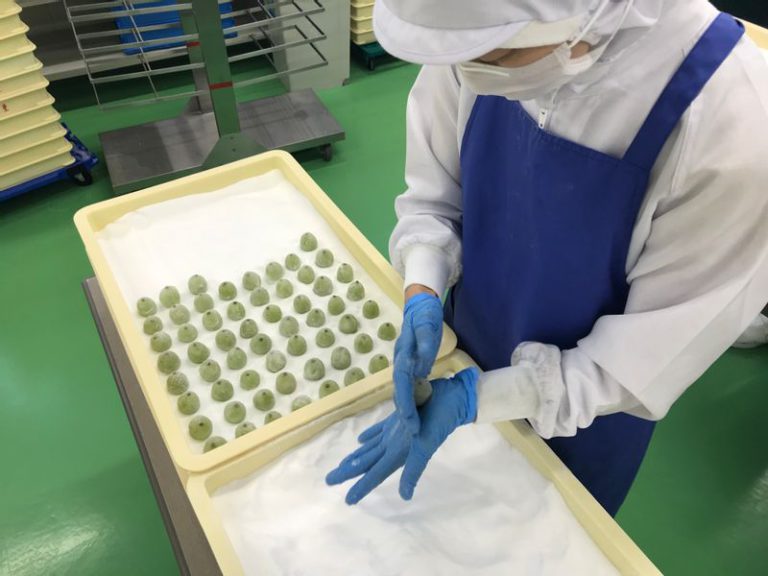
The production process has remained unchanged since its inception: handmade. The muscats are taken off the clusters carefully to ensure the fruit is unharmed. Then, each grape is wrapped in a thin layer of gyuhi and left to dry just enough to finish the process. While it may seem indulgent, Shibakiri suggests treating yourself and consuming one all at once. He wants us to enjoy the burst of juice filling our mouths.
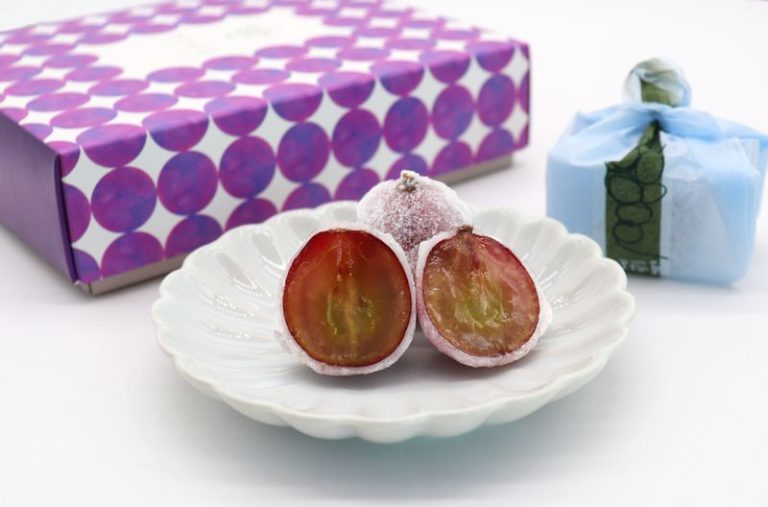
Hitotsubu no Muscat is available from the end of April to September when Muscat of Alexandria is in season. It keeps for nine days at room temperature from the date of manufacture. Hitotsubu no Shine Muscat are offered starting in August, using the recently trendy Shine Muscat variety. Additionally, Hitotsubu no Pione are available from mid-July to September. It will be interesting to compare their flavors.
The unique original tanzaku instead of noshi are designed by Shibakiri
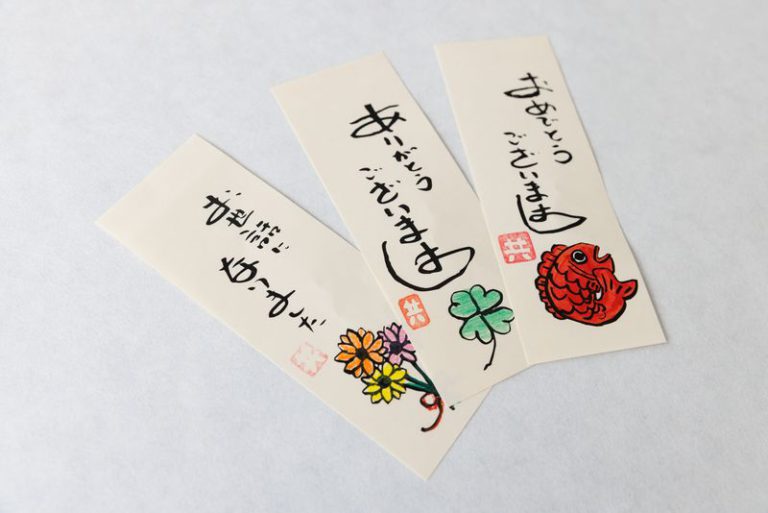
Kyorakudo offers an interesting service that is perfect for gift-giving. They offer an original tanzaku—a strip of paper that can be used as a substitute for noshi (gift wrapper). Currently, 35 types of tanzaku are available, each designed with words and illustrations. These tanzaku range from simple expressions of gratitude like “Thank you” to more specific situations like “Homecoming gift.” All of them are written by Shibakiri.
Shibakiri says, “I write the POPs, but my handwriting isn’t particularly good. But if you do anything with pride, the handwriting looks curiously tasteful. I’m particular that they are not colored copies but colored in. I print just the outlines, and the store staff colors each one.”
Shibakiri started this service when he opened stores in Chiba and Shibuya. The heart-warming, hand-painted tanzaku at Kyorakudo has become a unique feature that sets it apart from other stores. A noshi might be too much if you are looking for a gift that is more of a thoughtful gesture than a formal one. This original tanzaku is just right for such situations.
Kyorakudo celebrates its 90th anniversary this year. Like Hitotsubu no Muscat, Shibakiri hopes to continue producing “straightforward” wagashi that truly showcases the deliciousness of the ingredients.
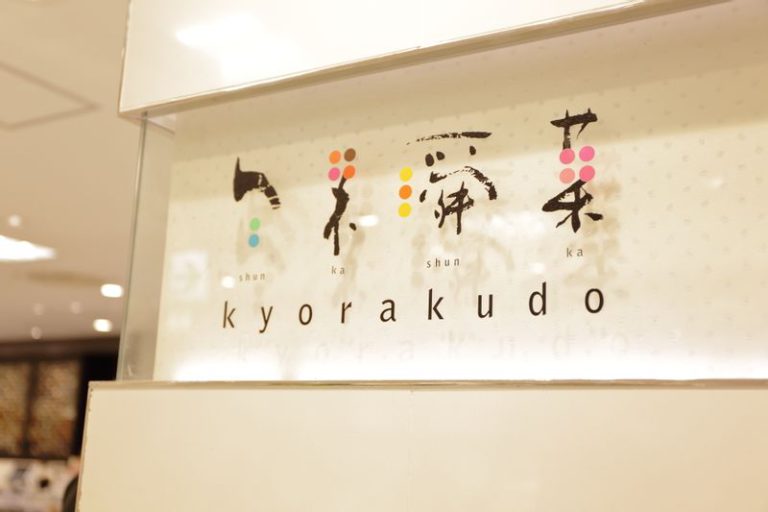
Shibakiri says, “The concept is Shunka Shunka (seasonal fruit of the moment). Our wagashi is not a mere combination of ingredients. Instead, we capture the essence of each ingredient at its most flavorful moment to savor it with gusto. Okayama’s white peaches are also delicious, so there are many more ingredients I want to turn into products.”
Hitotsubu no Muscat captures the deliciousness of the Muscat of Alexandria. It is an ideal summer gift for anyone who enjoys muscats. How about surprising them with a delivery?

